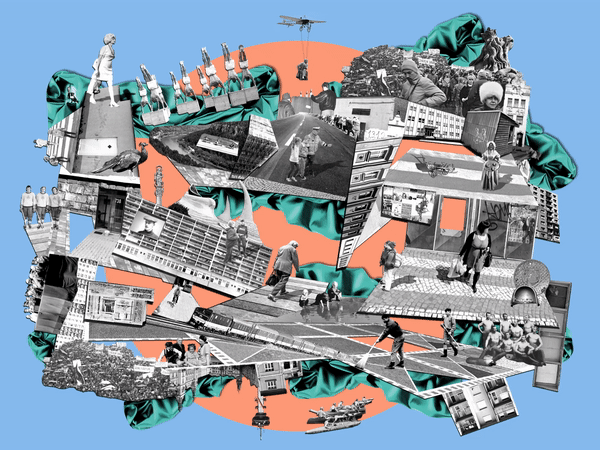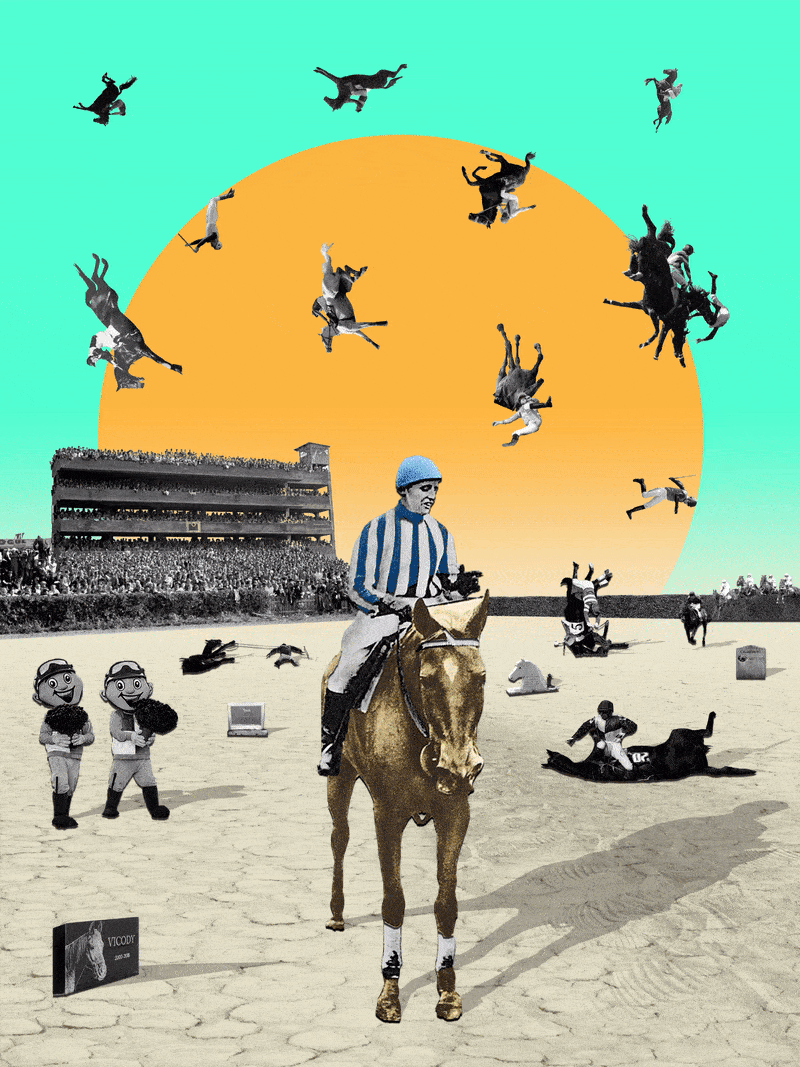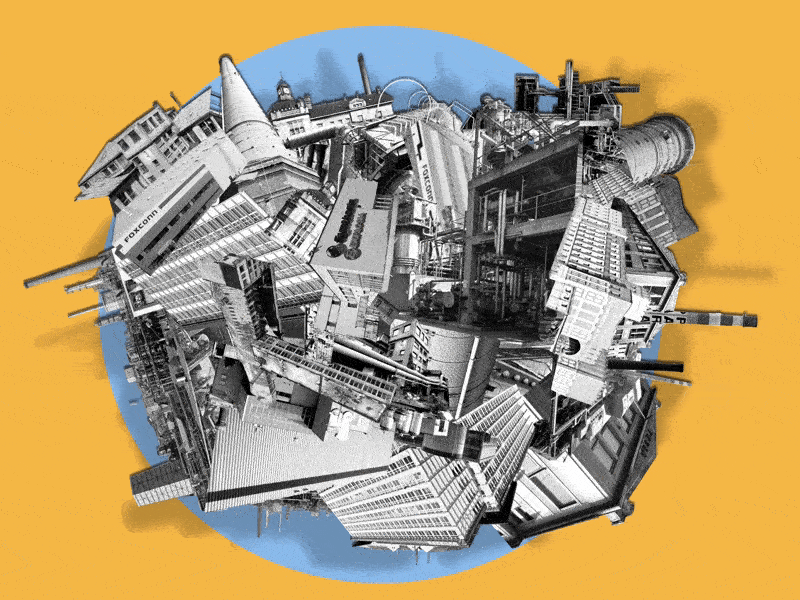News from Home is a collaboration between visual artist and sociologist Luke Conroy (Australia) and documentary filmmaker and visual artist Anne Fehres (The Netherlands). The core aim of ‘News From Home’ is to engage with the people, objects and stories which make up a local community and communicate these through visual art pieces.
These art pieces take the form of digital photo montages. Each of these montages contains between 2 and 200 individual ‘layers’ which are sourced from the thousands of photographs captured by the artists, alongside archival images sourced from the community in which the project is undertaken.
The starting point for News From Home is the humble postcard. The artists are interested in how the postcard presents highly constructed and idyllic images of a place, yet at the same time fails to acknowledge the more authentic but messy reality of that place. The constructed images of the postcard promote a particular ‘tourist gaze’ of a location, whereby the those who visit a place only seek out to confirm the stylised images and experiences seen in postcards, rather than question them or consider a place on a deeper level. It is this ‘deeper level’ consideration that lays at the heart of this project.
'News From Home' is an ongoing project that has been selected for undertaking in six locations during 2019. See works from these locations below and follow our project on Instagram: @news_from_home
If you are interested in viewing a summary portfolio of this project, click here
News from Home is a collaboration between visual artist and sociologist Luke Conroy (Australia) and documentary filmmaker and visual artist Anne Fehres (The Netherlands). The core aim of ‘News From Home’ is to engage with the people, objects and stories which make up a local community and communicate these through visual art pieces.
These art pieces take the form of digital photo montages. Each of these montages contains between 2 and 200 individual ‘layers’ which are sourced from the thousands of photographs captured by the artists, alongside archival images sourced from the community in which the project is undertaken.
The starting point for News From Home is the humble postcard. The artists are interested in how the postcard presents highly constructed and idyllic images of a place, yet at the same time fails to acknowledge the more authentic but messy reality of that place. The constructed images of the postcard promote a particular ‘tourist gaze’ of a location, whereby the those who visit a place only seek out to confirm the stylised images and experiences seen in postcards, rather than question them or consider a place on a deeper level. It is this ‘deeper level’ consideration that lays at the heart of this project.
'News From Home' is an ongoing project that has been selected for undertaking in six locations during 2019. See works from these locations below and follow our project on Instagram: @news_from_home
If you are interested in viewing a summary portfolio of this project, click here
News from Home is a collaboration between visual artist and sociologist Luke Conroy (Australia) and documentary filmmaker and visual artist Anne Fehres (The Netherlands). The core aim of ‘News From Home’ is to engage with the people, objects and stories which make up a local community and communicate these through visual art pieces.
These art pieces take the form of digital photo montages. Each of these montages contains between 2 and 200 individual ‘layers’ which are sourced from the thousands of photographs captured by the artists, alongside archival images sourced from the community in which the project is undertaken.
The starting point for News From Home is the humble postcard. The artists are interested in how the postcard presents highly constructed and idyllic images of a place, yet at the same time fails to acknowledge the more authentic but messy reality of that place. The constructed images of the postcard promote a particular ‘tourist gaze’ of a location, whereby the those who visit a place only seek out to confirm the stylised images and experiences seen in postcards, rather than question them or consider a place on a deeper level. It is this ‘deeper level’ consideration that lays at the heart of this project.
'News From Home' is an ongoing project that has been selected for undertaking in six locations during 2019. See works from these locations below and follow our project on Instagram: @news_from_home
If you are interested in viewing a summary portfolio of this project, click here
News From Home - Pardubice, Czech Republic
The seventh location for 'News From Home' is in Pardubice, Czech Republic, where we will explore the meaningful yet often overlooked and omitted stories of the community. In our previous editions of this project, these stories have been explored ‘in-person’ in a particular city. In the current climate of "switched off cities" however, in the Pardubice edition of News From Home we will complete this project in ‘virtual space’.
The conceptual basis of 'News From Home' is a consideration of a simple object - the postcard. We are interested in how the postcard, through its glossy, saturated images offer a window to a place that is not altogether truthful - it is a constructed reality. The aim of our project therefore, is to explore the idea of this ‘constructed reality’ further, to create a series of postcards for the city of Pardubice, without ever actually visiting this area.
In order to undertake this project, we will explore the city of Pardubice from afar, through the virtual space of the internet. In this exploration we will collect a vast amount of images/ideas – from locations such as blogs, social media users from Pardubice and Google Earth – and use these as the basis for our art works. The outcome will be a series of 4 postcards from the city, presented online. These postcards will be digital collage pieces, made of up of potentially hundreds of resources sourced online. A testament to a place we have only experienced from afar.
For daily updates of theis project and it's future stays in other areas, visit our Instagram Page.
Hot Dog Mystery

The Pardubice Train Station is an essential location in the city for a variety of reasons. Not only is it a central transport hub for tourism and industry, it is often overlooked in its function as a site for the homeless as well as those up late looking for food or alcohol when all else is closed. It is in relation to this last function that a curious mystery arises.
While exploring Pardubice, one local revealed the great mystery of the night shop located inside of the train station. The shop is open 24/7 and offers the cheapest hamburgers and alcohol. As this local described it, “those hamburgers taste like shit but do believe me, that’s the best stuff you can have when you are waiting for the first morning train after party in Pardubice”.
The mystery of the train station does not relate to the lacklustre tasting hamburgers however, but instead to another item - their hot dogs. From a distance, a large sign stating ‘Párek v rohlíku’ (hot dogs) beckons customers towards the shop. Once they arrive at the counter however, a smaller sign alerts them that they are ‘out of hot dogs’. While this could be excused if it happened occasionally, the hot dogs have now not been seen for an extended period of time, yet the sign advertising them remains.
As such, these mysterious hots dogs have now become a pipedream for the locals - a seemingly unattainable fantasy. The absence of this food has the locals asking questions - does someone buy the hot dogs up every morning? Do you know someone who has ever tasted them? Are the hot dogs in a safe space somewhere? Did they ever exist in the first place? Do they taste any better than the hamburgers?
Such questions provided plenty of speculation for the late night and early morning visitors to the shop. However, it seems no one has the answers. Hope remains however, that late one evening in the future, one lucky customer will encounter these mysterious treats again. Until this time, the mystery of the hot dog’s whereabouts and existence remains.
Lost History

The city of Pardubice is documented in history for the first time in 1295. In its centuries of existence it has held many defining historical moments and leaders. This story relates to the city's more recent history, as a city in the Soviet Union.
Like many cities of the former Soviet Union, Pardubice once held a statue of Vladimir Lenin. From 1976 to 1990 a statue of the former leader sat in the centre of Pardubice. Unlike most statues of Lenin, this particular one was unique in being one of the few where he is captured in a seated position, reminiscent of Rodin's ‘The Thinker'.
For fourteen years the sitting Lenin sat in the city, looking thoughtfully into the distance but perhaps even he could not imagine what his later life would hold. The first indication that things were changing was in November 1989, when the peaceful overthrow that became known as the Velvet Revolution would result in the country leaving the Soviet Union.
Following this, Pardubice’s Lenin was removed on February 8, 1990 and would disappear from public view for ten years. During this time it was stored in a wooden box in the yard of a city house. Here, it was not always respected, as demonstrated by one’s locals' admission that, “we used to pee on that wooden structure". This was not the end of the road for Lenin however and eventually he was able to escape this box.
The Pardubice council would later have the idea to melt the statue down and use the bronze to make a statue of Czechoslovakia's first president, Tomas Garrigue Masaryk. The relatives of the Lenin statue’s original sculptor however, refused to give approval for this plan. Instead, in 2001, it was decided that the two ton and over two metres tall bronze statue would go up for auction.
The statue was successfully auctioned in 2001 for 15,000 EUR. The new owner of the sitting dictator planned to place the statue in a newly established museum of totalitarianism, as a warning to future generations. Years later however, the museum would never be opened. When journalists later investigated the statue's whereabouts, they found that the original buyer had passed away and her daughter said the statue had probably ended up with the foreign partner of her mother - but couldn’t be sure of his name.
As such, today, the exact location of Lenin is unclear. It appears that he has been carried far away from Pardubice to another life. But perhaps he sits somewhere close by, waiting to be found again.
Lata and Norma

Velká pardubická is an iconic cross-country steeplechase held in Pardubice, which has been run since 1874. Spectators flood the city for the event on the second Sunday in October, with riders the world over testing themselves across 6.9 km and 31 obstacles. Traditionally the race was a ‘proving ground’ for the men in the society - it was believed that if you were tough enough to ride this race, you're tough enough to go to war. The cultural and social significance of this event is huge, it is a place where pride is at stake and national heroes and villains are founded.
Competing in the Velká pardubická race requires not only expertise but courage from both rider and horse. The course features some of the most demanding obstacles in the world of competitive steeplechase. It is so dangerous that dozens of horses have died, with the causes of death - bone breaks, exhaustion, heart collapse, dislocation, lung injury, paralysis - making for uncomfortable reading and protests from animal rights advocates.
It is from within this context that comes the story of one woman in 1937 - Lata Brandisová. Lata’s story is extraordinary firstly in the fact she was a female competitor in the Velká pardubická. In the 1930s, within a traditional and old-fashioned society, having a woman even competing was considered an outrage. This is exactly what she did however and not only did she compete, she won.
What makes this story even greater, is that this win occurred in a time of great significance for her country. In 1937, the year Lata won the race with her horse Norma, tensions between Germany and Czechoslovakia were already high and building. Czechs feared a German invasion to take the Sudetenland, home of many ethnic Germans. Meanwhile, Nazi SS riders had won seven of the previous nine Velká pardubická races. In the eyes of Hitler, Goebbels and Himmler, sport, and more specifically equestrian sport, was very important for propaganda. During the 1937 race therefore, there was a lot on the line.
Not only was Lata racing to prove herself and all women, but she was racing for the pride of her country against the Nazis. In the race, Lata was up against 13 riders — including six SS cavalry officers. She beat them all.
The Czechs needed a National hero and she was it. At the finish line 40,000 people were chanting her name and she was the nation’s hero. The celebrations would not last long however, and 1937 would be the last time the Velká pardubická was run before the war.
Less than a year after Lata’s big win, the Nazis annexed Czechoslovakia’s Sudetenland. Early in 1939, Germany invaded the whole of Czechoslovakia and soon, the whole world was at war. Lata would escape to the woods during this time however the fate of her horse Norma remains unknown. Today, the Velká pardubická is still being run and Lata is still the only woman to ever win the iconic race.
Beer, Gingerbread, Explosives and Electronics

Throughout modern history, Pardubice has been sustained by the various factories situated within it. The factories deal with food and chemicals, alongside electrical and mechanical engineering. Because of these industries, Pardubice enjoys a very low rate of unemployment.
One of the favourite products of these industries is beer, a proud tradition which has been sustained since the middle ages. Another favourite is the famous 'Pardubický perník' (Pardubice gingerbread). Starting with industrialization in the beginning of the 20th century, gingerbread production in Pardubice has survived not only economic upheavals, but wars and totalitarian regimes that regarded family craft traditions as a relic of the past.
A newer and more notorious product manufactured in Pardubice is the plastic explosive ‘Semtex’. This substance made headlines as the weapon of choice for many terrorist organisations in the 1970s and 80s, popular due to its difficult detection at security screenings. Since such headlines, new measures have been put in place to ensure it is easier to detect yet the controversies surrounding its production remain, no thanks to a major explosion at the plant as recently as 2019, which lead to the death of an employee.
Pardubice is also home to 21st century technologies, such as the Taiwanese owned company ‘Foxconn’. This factory is a global leader in manufacturing computer chips, employing several thousand, mostly foreign, workers in the city. Although it is a vital source of income, the work comes at a price and is also surrounded in controversy.
As an article in 2017 explains, the company has previously been monitored for its harsh working conditions and risks fines for labour abuses. Comments found online support such articles, with one employee stating: 'I worked in Pardubice in Foxconn. 12 hours a day as a slave and an animal without free opinion and human rights.” While this comment suggests a grim reality in this factory, other comments suggest there is some positives involved, with reports that the food canteens inside the factory are amazing.